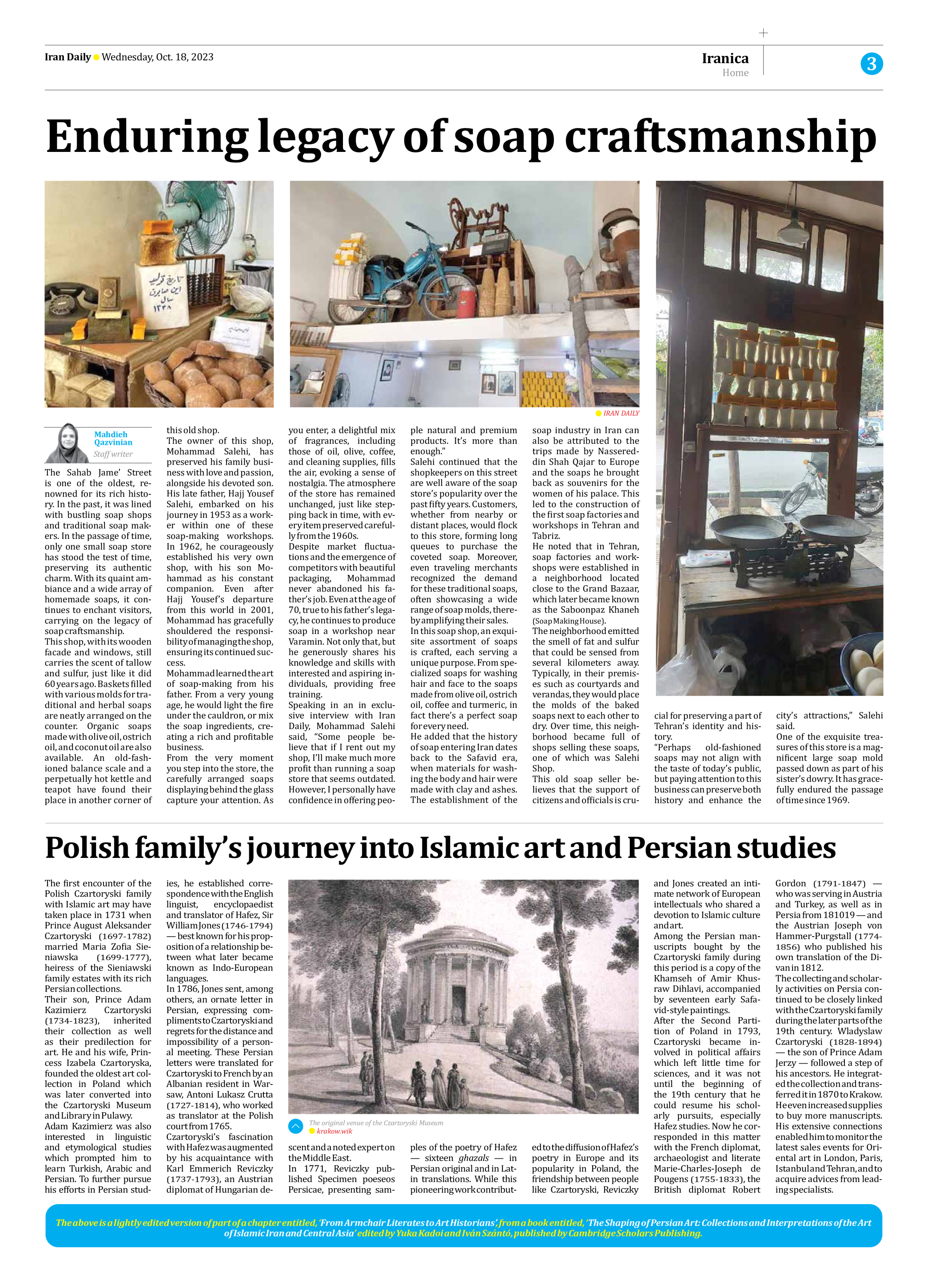
Polish family’s journey into Islamic art and Persian studies
The first encounter of the Polish Czartoryski family with Islamic art may have taken place in 1731 when Prince August Aleksander Czartoryski (1697-1782) married Maria Zofia Sieniawska (1699-1777), heiress of the Sieniawski family estates with its rich Persian collections.
Their son, Prince Adam Kazimierz Czartoryski (1734-1823), inherited their collection as well as their predilection for art. He and his wife, Princess Izabela Czartoryska, founded the oldest art collection in Poland which was later converted into the Czartoryski Museum and Library in Pulawy.
Adam Kazimierz was also interested in linguistic and etymological studies which prompted him to learn Turkish, Arabic and Persian. To further pursue his efforts in Persian studies, he established correspondence with the English linguist, encyclopaedist and translator of Hafez, Sir William Jones (1746-1794) — best known for his proposition of a relationship between what later became known as Indo-European languages.
In 1786, Jones sent, among others, an ornate letter in Persian, expressing compliments to Czartoryski and regrets for the distance and impossibility of a personal meeting. These Persian letters were translated for Czartoryski to French by an Albanian resident in Warsaw, Antoni Lukasz Crutta (1727-1814), who worked as translator at the Polish court from 1765.
Czartoryski’s fascination with Hafez was augmented by his acquaintance with Karl Emmerich Reviczky (1737-1793), an Austrian diplomat of Hungarian descent and a noted expert on the Middle East.
In 1771, Reviczky published Specimen poeseos Persicae, presenting samples of the poetry of Hafez — sixteen ghazals — in Persian original and in Latin translations. While this pioneering work contributed to the diffusion of Hafez’s poetry in Europe and its popularity in Poland, the friendship between people like Czartoryski, Reviczky and Jones created an intimate network of European intellectuals who shared a devotion to Islamic culture and art.
Among the Persian manuscripts bought by the Czartoryski family during this period is a copy of the Khamseh of Amir Khusraw Dihlavi, accompanied by seventeen early Safavid-style paintings.
After the Second Partition of Poland in 1793, Czartoryski became involved in political affairs which left little time for sciences, and it was not until the beginning of the 19th century that he could resume his scholarly pursuits, especially Hafez studies. Now he corresponded in this matter with the French diplomat, archaeologist and literate Marie-Charles-Joseph de Pougens (1755-1833), the British diplomat Robert Gordon (1791-1847) — who was serving in Austria and Turkey, as well as in Persia from 181019 — and the Austrian Joseph von Hammer-Purgstall (1774-1856) who published his own translation of the Divan in 1812.
The collecting and scholarly activities on Persia continued to be closely linked with the Czartoryski family during the later parts of the 19th century. Wladyslaw Czartoryski (1828-1894) — the son of Prince Adam Jerzy — followed a step of his ancestors. He integrated the collection and transferred it in 1870 to Krakow. He even increased supplies to buy more manuscripts. His extensive connections enabled him to monitor the latest sales events for Oriental art in London, Paris, Istanbul and Tehran, and to acquire advices from leading specialists.
The above is a lightly edited version of part of a chapter entitled, ‘From Armchair Literates to Art Historians’, from a book entitled, ‘The Shaping of Persian Art: Collections and Interpretations of the Art of Islamic Iran and Central Asia’ edited by Yuka Kadoi and Iván Szántó, published by Cambridge Scholars Publishing.







